calsfoundation@cals.org
Barbecue
Barbecue (both the cooking technique and the social institution) was introduced into the Arkansas Territory and most parts of the South by Anglo settlers traveling west from the eastern seaboard and Appalachian Mountains. By the time barbecue had crossed the Mississippi River into Arkansas Territory, it was already a 150-year-old American institution and the standard form of celebration of American independence on the Fourth of July.
On July 4, 1821, two of the first recorded barbecues took place in what would become the state of Arkansas. One event was held in Phillips County. W. B. R. Horner served as the presiding officer of the celebration and made the address of the day. From the account of Josiah Shinn, who detailed the event in his 1908 history of Arkansas: “Several beeves were roasted whole and served in barbecue style….There must have been some beverage of very strong parts, though of this the record is silent….At this first barbecue in Phillips good order prevailed all day long and everybody was delighted. Toasts were drunk and at the conclusion of each salute of from three to nine guns were fired.” Another July 1821 celebration took place about forty miles southwest of Phillips County at Arkansas Post. Robert Johnson, one of the patriarchs of Chicot County, was selected to make a toast.
With the barbecue now established as the primary social occasion of early territorial life in Arkansas, it was not long before politicians began to recognize the value of these community events as ideal platforms for electioneering, which often drew hundreds of people from forty to fifty miles in every direction. In 1840, the Tippecanoe Club of Little Rock (Pulaski County), in an effort to elect the presidential ticket of William Henry Harrison and John Tyler, adopted a resolution to give “a free Barbecue to the people of Pulaski County, and as many others from the adjoining counties as can conveniently attend.” Campaign barbecues remained a fundamental feature of Arkansas political life throughout this time period and well into the twentieth century. Campaign barbecues are still common in Arkansas today.
Toward the end of the 1840s, barbecues in Arkansas took on a new form and function of public gathering. As tensions between Mexico and the United States over the territory of Texas came to a head, and with the U.S. Army being too small for the impending war, Arkansas contributed many of the volunteers needed to fight the Mexican War. Barbecues became the primary method of recruiting soldiers and sending them off to war. The voluntary company raised in western Arkansas of seventy men assembled at a Major Billingsly’s farm in Mountain Township on June 10, 1847. The citizens of Crawford and Washington counties prepared “an extensive barbecue” for the volunteers. During the years of the Civil War, large social gatherings largely fell to the wayside as the social and economic traditions of Arkansas were upended.
As Arkansas emerged from the Civil War and approached the twentieth century, barbecue traditions remained relatively uniform across the region. They were always large, outdoor community gatherings consisting of whiskey and questionable behavior. The meat was cooked in long, shallow earthen trenches with local hardwood such as oak and hickory. It was not uncommon to see meat from a variety of animals being smoked, including cows, hogs, sheep, goats, chickens, deer, turkeys, and even squirrels.
Food writer Robert Moss asserts that “the single greatest influence to the regionalization of barbecue styles seems to have been from the rise of barbecue restaurants. As they transformed what were once large-scale, occasional public gatherings into smaller, more regular businesses, barbecue restauranteurs standardized the meat they served, creating new and different methods of cooking and their own signature sauces.”
Perhaps the first example of this phenomenon in Arkansas can be found in Marianna (Lee County), a mere twenty miles from the site of the original Phillips County barbecue. Since at least the 1910s, Jones Bar-B-Q Diner has existed in Marianna in some form. Walter Jones was the founder and first pitmaster, along with his brother, Joe Jones, and partner Tobe Key. Originally located in Walter Jones’s dogtrot shack, the operation moved to the current location in 1964, a white cinderblock shotgun shack. Despite a pit fire in February 2021 that destroyed most of the building, Jones Bar-B-Q remains Arkansas’s oldest barbecue restaurant, and, according to John T. Edge of the Southern Foodways Alliance, might be “the oldest black-owned restaurant in the South and, perhaps, one of the oldest family-owned black restaurants in the nation.” It has also been speculated that Jones Bar-B-Q was the first racially integrated institution in the state. In Southern Food: At Home, on the Road, in History (1987), John Egerton writes, “Before schools, churches, sports teams, and even other restaurants in the South got around to lowering the barriers of racial segregation, many of the region’s best barbecue pits maintained a thriving interracial trade.” Because of an abundance of Black pitmasters in the eastern part of the state, barbecue in Arkansas has long served as a conduit between white and Black citizens, offering white patrons the opportunity to spend their dollars in Black-owned restaurants long before the Jim Crow era ended.
In the 1920s, the newly affordable Ford Model-T presented a new level of mobility for those traveling in the rural South. Roadside campgrounds, food stands, service stations, and general stores emerged along the major thoroughfares. Barbecue sandwiches proved to be a wildly popular menu item—so popular that many enterprises selling barbecue on the side, like gas stations and motels, reconfigured their business models to satisfy consumer demand. One such institution is McClard’s in Hot Springs (Garland County). Alex and Gladys McClard owned the Westside Tourist Court in Hot Springs, and in 1928, they added a barbecue pit in order to sell smoked beef, pork, and their specialty, goat, to their guests. As the legend goes, the McClard family acquired the recipe for their legendary barbecue sauce from a tourist who could not afford his bill at the end of his stay. The legend proved to be a selling point, and they were soon attracting some of the country’s best-known gangsters, including Meyer Lansky and Al Capone. The restaurant moved to its current location in 1942. It remains a local favorite and is well known as President Bill Clinton’s preferred barbecue.
Blytheville (Mississippi County) is considered by many to be the “Capital of Arkansas Barbecue.” In 1923, Ernest Halsell opened a barbecue restaurant in a log cabin called the Rustic Inn. In 1930, taking advantage of the town’s population boom, Halsell moved his operation to a larger stone building. In 1946, he sold the Rustic Inn and, after an unsuccessful stint in farming, opened another barbecue restaurant on North Sixth Street called the Dixie Pig. Several other regionally known barbecue institutions are located in Blytheville, including Yank’s Famous Barbeque, Kream Kastle, and Benny Bob’s. Other noteworthy institutions, now closed, were Penn’s Barbeque and Johnny’s BBQ.
Though not quite uniform throughout the state’s different regions, today’s Arkansas barbecue style can loosely be defined as pork—either sliced, chopped, or pulled—piled onto either a bun or two slices of plain white bread. Coleslaw served on the sandwich is a common condiment, as are pickles and onions. The most common source of wood fuel is hickory, although in southern Arkansas it is not uncommon to see oak. Sauces vary from region to region; it is common to see heavily vinegar-based sauces in the northeast and tomato-based sauces toward the west. When traveling through the Delta, one will see hot tamales served alongside barbecue, and in the Piney Woods, with its proximity to Texas, beef brisket is featured on menus more prevalently. Every sub-region in the state serves pork ribs, both wet (with sauce) and dry (with spices rubbed on).
For additional information:
Edge, John T. “In Through the Back Door.” Oxford American 64 (Spring 2009): 26–29. Online at https://main.oxfordamerican.org/magazine/item/246-in-through-the-back-door (accessed November 11, 2021).
Egerton, John. Southern Food: At Home, On the Road, In History. New York: Knopf, Inc., 1987.
Hyland, Brock. “The Three Kings of Arkansas Brisket.” Arkansas Times, November 2022, 92–95.
Nelson, Rex. “Arkansas’ Barbecue Capitol.” Arkansas Democrat-Gazette, April 4, 2012. https://www.arkansasonline.com/news/2012/apr/04/arkansas-barbecue-capital-20120404/ (accessed November 11, 2021).
———. “Blytheville’s Dixie Pig.” Arkansas Democrat-Gazette, December 30, 2017. https://www.arkansasonline.com/news/2017/dec/30/blytheville-s-dixie-pig-20171230/ (accessed November 11, 2021).
Shinn, J. H. Pioneers and Makers of Arkansas. Little Rock: Democrat Printing and Lithographing Co., 1908.
Veteto, James R., and Edward M. Maclin, eds. The Slaw and the Slow Cooked: Culture and Barbecue in the Mid-South, edited by James R. Veteto and Edward M. Maclin. Nashville, TN: Vanderbilt University Press, 2011.
Brock G. Hyland
Little Rock, Arkansas
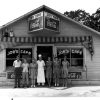 Food and Foodways
Food and Foodways Lindsey, Donnie Lee, Sr.
Lindsey, Donnie Lee, Sr.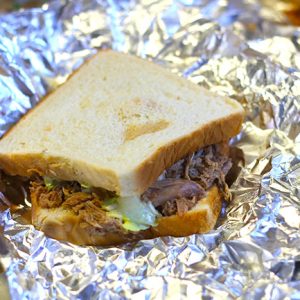 BBQ Sandwich
BBQ Sandwich 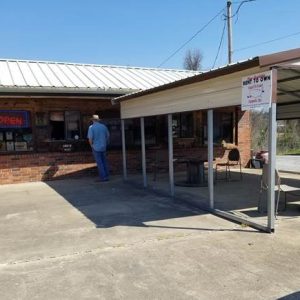 Craig's Bar-B-Q
Craig's Bar-B-Q 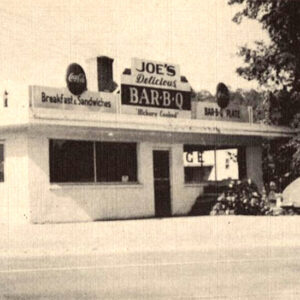 Joe's Bar-B-Q
Joe's Bar-B-Q  Jones Bar-B-Q Diner
Jones Bar-B-Q Diner 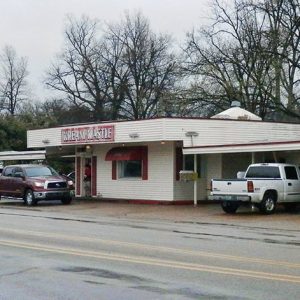 Kream Kastle
Kream Kastle 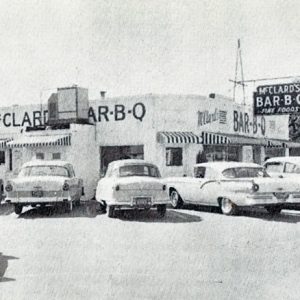 McClard's Bar-B-Q
McClard's Bar-B-Q 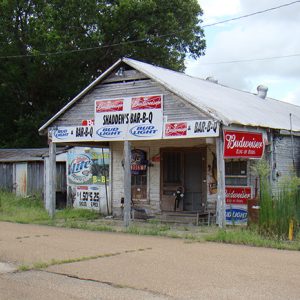 Shadden's B-B-Q
Shadden's B-B-Q 




Comments
No comments on this entry yet.